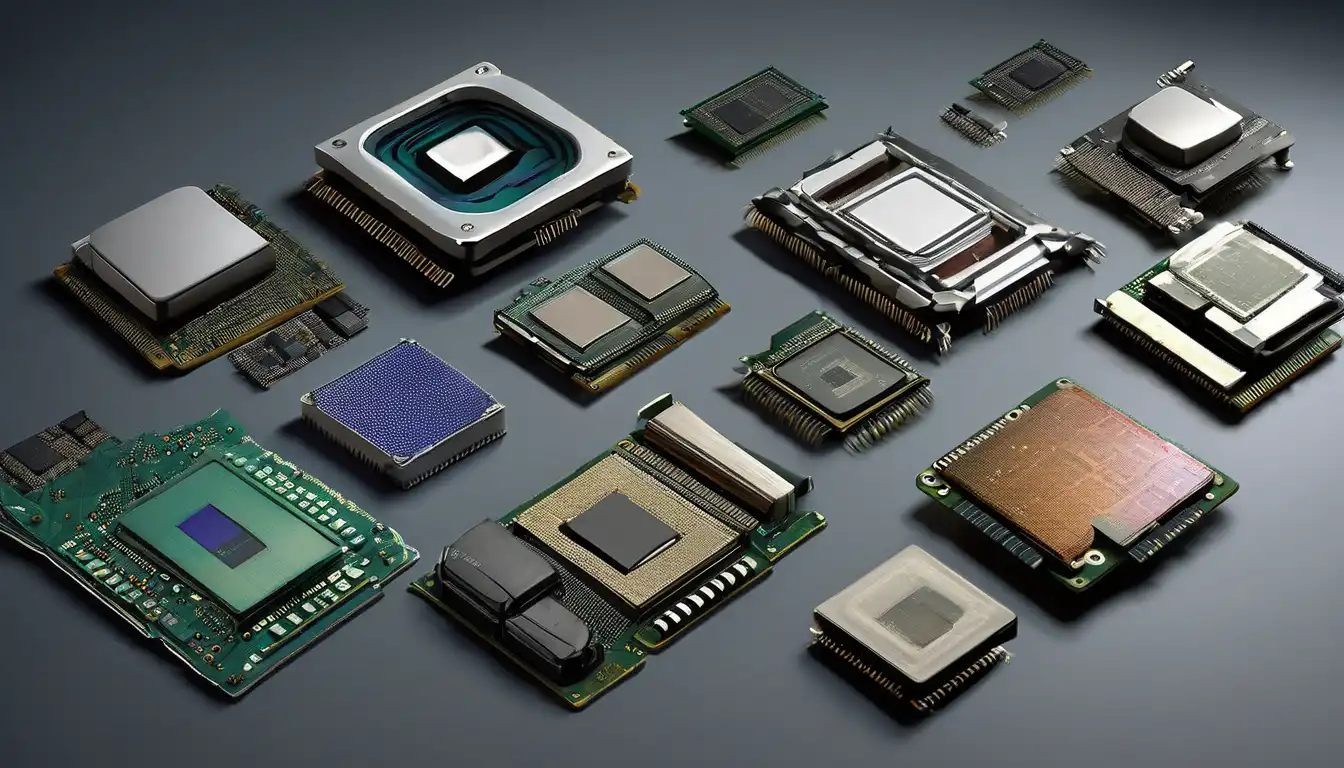The Dawn of Computing: Early Processor Technologies
The evolution of computer processors represents one of the most remarkable technological journeys in human history. Beginning with primitive vacuum tube technology in the 1940s, processors have undergone revolutionary changes that have fundamentally transformed how we live, work, and communicate. The first electronic computers, such as ENIAC, utilized thousands of vacuum tubes that consumed enormous amounts of power and required constant maintenance. These early processors operated at speeds measured in kilohertz, yet they laid the foundation for the digital revolution that would follow.
The Transistor Revolution
The invention of the transistor in 1947 marked a pivotal moment in processor evolution. Developed by Bell Labs scientists John Bardeen, Walter Brattain, and William Shockley, transistors replaced bulky vacuum tubes with smaller, more reliable semiconductor devices. This breakthrough enabled the creation of second-generation computers that were faster, more efficient, and significantly smaller than their predecessors. The transition from vacuum tubes to transistors represented the first major leap in processor miniaturization and efficiency.
The Integrated Circuit Era
The 1960s witnessed another revolutionary development with the invention of the integrated circuit (IC). Jack Kilby at Texas Instruments and Robert Noyce at Fairchild Semiconductor independently developed methods to combine multiple transistors on a single silicon chip. This innovation paved the way for third-generation computers and established the foundation for modern microprocessor technology. The ability to integrate multiple components on a single chip dramatically reduced size, cost, and power consumption while improving reliability and performance.
The Birth of Microprocessors
1971 marked a watershed moment with Intel's introduction of the 4004, the world's first commercially available microprocessor. This 4-bit processor contained 2,300 transistors and operated at 740 kHz, yet it demonstrated the potential of putting an entire central processing unit on a single chip. The success of the 4004 led to increasingly powerful processors, including the 8-bit Intel 8080 and the 16-bit Intel 8086, which established the x86 architecture that continues to dominate personal computing today.
The Personal Computer Revolution
The 1980s saw processors become the driving force behind the personal computer revolution. Intel's 8088 processor powered IBM's first PC, while competitors like Motorola and Zilog offered alternative architectures. This era witnessed intense competition and rapid innovation, with processor speeds increasing from a few megahertz to tens of megahertz. The introduction of reduced instruction set computing (RISC) architectures provided new approaches to processor design, emphasizing simplicity and efficiency over complex instruction sets.
The Megahertz Race and Beyond
Throughout the 1990s, processor manufacturers engaged in what became known as the "megahertz race." Intel's Pentium processors competed fiercely with AMD's offerings, with clock speeds escalating from 60 MHz to over 1 GHz by the decade's end. However, this period also revealed the limitations of simply increasing clock speeds, as power consumption and heat generation became significant challenges. This realization prompted a shift toward multi-core architectures and more efficient design approaches.
The Multi-Core Revolution
The early 2000s marked a fundamental shift in processor design philosophy. Instead of focusing solely on increasing clock speeds, manufacturers began integrating multiple processor cores on a single chip. This approach allowed for improved performance without corresponding increases in power consumption and heat generation. Intel's Core 2 Duo and AMD's Athlon 64 X2 processors demonstrated the effectiveness of multi-core architectures, enabling true parallel processing and better multitasking capabilities.
Specialization and Integration
Modern processor evolution has increasingly emphasized specialization and integration. Today's processors often include dedicated components for graphics processing, artificial intelligence, and specific computational tasks. The integration of graphics processing units (GPUs) alongside traditional CPU cores has created powerful system-on-chip (SoC) designs that power everything from smartphones to high-performance servers. This trend toward heterogeneous computing represents the current frontier in processor development.
Current Trends and Future Directions
Contemporary processor evolution focuses on several key areas, including energy efficiency, artificial intelligence acceleration, and quantum computing research. The development of processors based on ARM architecture has revolutionized mobile computing, while advances in semiconductor manufacturing continue to push the boundaries of miniaturization. Current research explores three-dimensional chip stacking, neuromorphic computing, and photonic processors that use light instead of electricity for computation.
The Quantum Computing Frontier
Looking toward the future, quantum processors represent the next potential revolution in computing technology. Unlike classical processors that use bits representing 0 or 1, quantum processors use qubits that can exist in multiple states simultaneously. While still in early stages of development, quantum processors promise to solve complex problems that are currently intractable for classical computers. Companies like IBM, Google, and Intel are actively developing quantum processing technologies that could redefine computing in the coming decades.
Impact on Society and Technology
The evolution of computer processors has had profound implications across virtually every aspect of modern society. From enabling the internet revolution to powering artificial intelligence systems, processors have become the fundamental building blocks of digital civilization. The continuous improvement in processing power, described by Moore's Law, has driven innovation in fields ranging from medicine and transportation to entertainment and scientific research. As processor technology continues to advance, it will undoubtedly enable new capabilities and applications that we can only begin to imagine.
The journey from vacuum tubes to modern multi-core processors demonstrates humanity's remarkable capacity for technological innovation. Each generation of processors has built upon the achievements of its predecessors while introducing new paradigms and capabilities. As we stand on the brink of new computing revolutions involving quantum and neuromorphic technologies, the evolution of processors continues to shape our technological future in ways that will transform how we solve problems, process information, and interact with the digital world.
